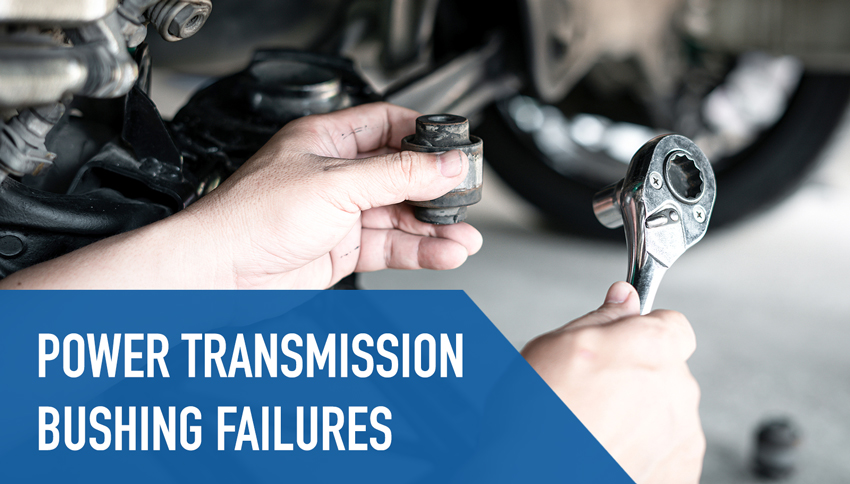When it comes to power transmission systems, bushings play a vital role in ensuring smooth and efficient operations. These small components provide support and reduce friction between rotating shafts and stationary parts, such as bearings or housings. However, power transmission bushings can experience failures due to various reasons, leading to equipment downtime, increased maintenance costs, and potential safety hazards. In this article, we will delve into the causes behind power transmission bushing failures and explore effective solutions for troubleshooting these issues.
Understanding Power Transmission Bushings
Power transmission bushings are cylindrical components typically made of durable materials like bronze, steel, or polymer composites. They are designed to withstand high loads, provide a bearing surface, and allow rotational movement with minimal friction. Bushings are commonly used in applications such as motors, pumps, conveyors, and industrial machinery. By acting as a mechanical interface, they protect the components from excessive wear and extend their lifespan.
Common Causes of Power Transmission Bushing Failures
Lack of Lubrication
Insufficient or improper lubrication is a leading cause of power transmission bushing failures. Without adequate lubrication, the friction between the rotating shaft and bushing increases, causing excessive heat and accelerated wear. Over time, this can lead to severe damage, including scoring, galling, or even seizure. Regular lubrication maintenance is crucial to ensure optimal performance and prevent premature bushing failures.
Excessive Load
When power transmission systems operate under heavy loads beyond their design capacity, it places excessive stress on the bushings. Overloading can result from increased operational demands, equipment misuse, or unexpected changes in the application’s requirements. Under such circumstances, the bushings may experience deformation, fatigue, or even fracture, leading to catastrophic failures.
Misalignment
Improper alignment between rotating shafts and stationary components can cause misalignment-related failures in power transmission bushings. Misalignment can result from poor installation, shaft deflection, foundation settling, or thermal expansion. When the shaft and bushing are not aligned correctly, it leads to uneven loading and increased friction, causing premature wear and potential bushing failure.
Contamination
The presence of contaminants, such as dirt, dust, moisture, or abrasive particles, can significantly impact the performance and longevity of power transmission bushings. Contamination can infiltrate the lubrication system or directly enter the bearing surfaces, leading to abrasive wear, corrosion, or erosion of the bushing material. Regular cleaning and implementing effective contamination control measures are essential to prevent such failures.
Signs and Symptoms of Bushing Failures
Despite their small size, power transmission bushing failures can have significant consequences on equipment performance. By understanding the signs and symptoms of bushing failures, operators can proactively address issues before they escalate. Here are some common indicators to look out for:
Unusual Noise
Excessive wear or damage to bushings can result in unusual noises, such as grinding, squeaking, or rattling sounds during operation.
Vibration
Bushing failures can lead to increased vibration levels, affecting the overall stability and smoothness of the power transmission system.
Increased Friction
A noticeable increase in friction can be an indication of bushing failure. This may cause the system to experience resistance or jerky movements.
Excessive Heat
Overheating in the vicinity of the bushings can suggest frictional issues or inadequate lubrication, potentially leading to bushing failures.
Leakage
If lubricant or fluid is leaking from the bushing area, it may signal a seal failure or damage to the bushing itself.
Reduced Performance
A decrease in equipment efficiency or performance could be attributed to bushing-related problems, impacting productivity and output.
Diagnosing Bushing Failures
To effectively troubleshoot power transmission bushing failures, it is essential to employ diagnostic techniques that help identify the root causes. Here are two key diagnostic methods:
Visual Inspection
Conduct a thorough visual examination of the bushings, paying attention to signs of wear, scoring, discoloration, or any visible damage. Look for any misalignment or irregularities in the surrounding components.
Measurement and Testing
Use precision measuring tools to assess dimensional changes in the bushings. This can include checking for deviations in inner and outer diameters, clearance gaps, or axial movement. Additionally, performing non-destructive tests, such as ultrasonic or magnetic particle inspections, can reveal hidden defects or cracks.
Did You know?
Power transmission bushings are used in a wide range of applications, including automotive engines, industrial machinery, electric motors, and agricultural equipment. They help reduce wear and vibration, resulting in smoother operation and increased efficiency of the machinery.
Solutions for Preventing Power Transmission Bushing Failures
To mitigate the risk of power transmission bushing failures, it is crucial to implement preventive measures and maintenance strategies. Here are some effective solutions:
Proper Lubrication
Ensure the bushings receive adequate lubrication based on the manufacturer’s recommendations. Regularly monitor lubricant levels and quality to prevent dry-running or contamination issues.
Load Management
Avoid overloading the power transmission system by adhering to the specified load limits and operational guidelines. Conduct load analysis and consider upgrading components if necessary.
Alignment Maintenance
Regularly inspect and adjust the alignment of rotating shafts and stationary components. Proper alignment minimizes unnecessary stresses and friction on the bushings.
Contamination Control
Implement measures to prevent contamination from entering the system, such as using proper seals, filters, and protective covers. Regularly clean the surrounding area and remove any debris or contaminants.
Power transmission bushing failures can disrupt operations, lead to costly downtime, and compromise equipment reliability. Understanding the common causes, recognizing the signs of failure, and implementing preventive measures are essential for troubleshooting and mitigating these issues.
By following proper lubrication practices, managing loads, maintaining alignment, and controlling contamination, operators can ensure the longevity and performance of power transmission bushings.
In conclusion, proactive maintenance, regular inspections, and the adoption of best practices are key to troubleshooting power transmission bushing failures effectively.
By addressing the root causes and implementing appropriate solutions, businesses can minimize downtime, reduce maintenance costs, and optimize the performance of their power transmission systems.
Get premium power transmission bushing that guarantee optimal performance. Choose Mechanical Power for your sourcing needs.

Resourceful and innovative Marketing Pro, with 20+ years of progressive experience in the marketing and creative technology industry. Responsible for digital and traditional marketing efforts that promotes brand awareness, increases engagement, and drives revenue.


















